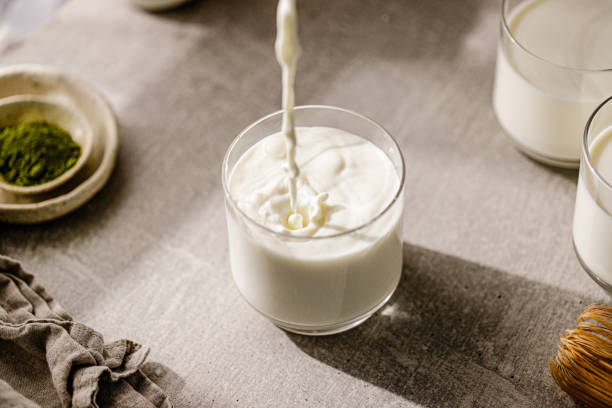Does milk bring blood pressure down?
An analysis of nine studies that looked at a total of nearly 60,000 people found that consuming just a little more than two cups of milk a day was associated with lower blood pressure.
What kind of milk is good for high blood pressure?
Skim milk
Low-fat dairy products such as skim milk and yogurt are a key component of Dietary Approaches to Stop Hypertension, a science-based set of recommendations for preventing and treating high blood pressure.
More than 65 million Americans have high blood pressure, according to "Your Guide to Lowering Your Blood Pressure with DASH." This condition occurs when the force of blood against your artery walls is persistently higher than normal, which should be 120 millimeters of mercury, or mmHg, over 80 mmHg, or lower. If hypertension is not properly treated, it can lead to blindness, heart disease or kidney disease. Changing the type of milk you drink is just one part of a dietary approach to treating high blood pressure.
The Dietary Approaches to Stop Hypertension, or DASH, diet recommends consuming foods and beverages that are low in fat, such as low-fat and fat-free milk. Whole milk is rich in saturated fat, with 1 cup of 3.25 percent whole milk containing nearly 8 grams of fat — and nearly 4.6 grams of that is saturated fat. On the other hand, fat-free or skim milk contains just 0.2 grams of fat, with just 0.125 grams being saturated fat.
Fat, especially saturated and trans fat, increases your risk of gaining weight, which in turn makes you more likely to have high blood pressure. If you've already been diagnosed with high blood pressure, carrying extra weight makes your condition worse. Hypertension also increases your risk of other cardiovascular conditions such as atherosclerosis, which is characterized by a buildup of blood fats and other substances along the walls of your arteries. A high-fat diet worsens atherosclerosis and other cardiovascular problems.
According to the USDA's ChooseMyPlate.gov, adults should consume 3 cups of dairy products daily and choose low-fat or fat-free varieties. If you are consuming milk primarily to get calcium, you should consider adding other calcium-rich foods to your diet rather than overindulging in milk. For instance, fish rich in heart-healthy omega-3 fats that are also good sources of calcium include canned sardines and salmon. Spinach, kale, okra and beans are also good sources of calcium, and the DASH diet recommends increasing the amount of vegetables you eat.
If you have been diagnosed with high blood pressure, your treatment — which includes your diet — should be supervised by a physician. Your doctor can recommend effective prescription medications and also suggest other dietary measures you can take, such as reducing your intake of salt, ultra-processed foods and refined carbohydrates and boosting your intake of high-fiber and potassium-rich foods.






